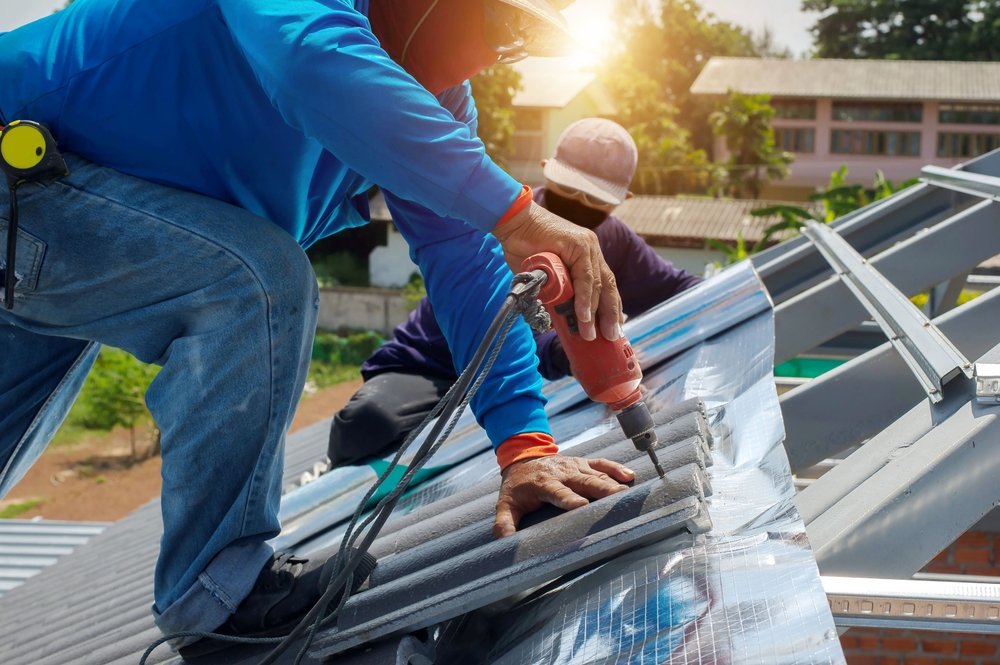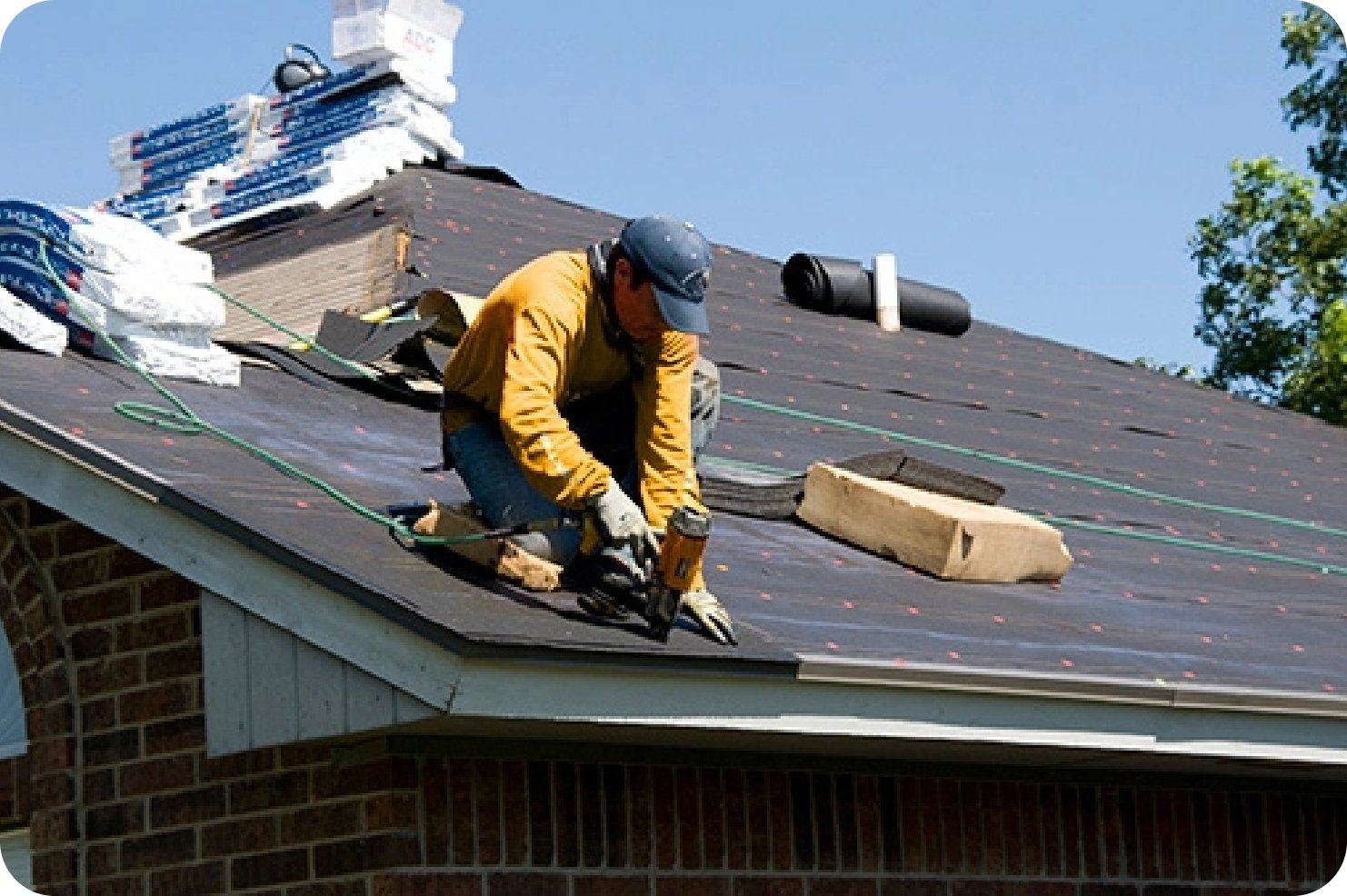Roofing Companies Oahu: Trusted Experts for Your Roofing Needs
Roofing Companies Oahu: Trusted Experts for Your Roofing Needs
Blog Article
Recognizing the Different Sorts Of Roofings: A Comprehensive Guide for Homeowners
With a variety of options-- varying from the standard gable to the modern flat-- each kind presents one-of-a-kind advantages and obstacles that should straighten with the home owner's particular needs and environmental factors to consider. As we explore the complexities of numerous roofing system kinds, it becomes noticeable that one dimension does not fit all; the appropriate choice may amaze you.
Saddleback Roof
Saddleback roofs, identified by their triangular shape, are amongst the most prominent roof covering styles because of their simpleness and performance in shedding water and snow. This style includes 2 sloping sides that satisfy at a ridge, enabling efficient water drainage and decreasing the risk of water accumulation. The steep pitch generally related to saddleback roofs enhances their capability to manage heavy rainfall, making them ideal for different environments.
Along with their useful benefits, gable roofing systems supply visual convenience. They can be adjusted to different building styles, from conventional to contemporary homes. The layout can also suit added functions such as dormer windows, which improve natural light and air flow in the attic room.
Additionally, saddleback roofs give enough space for insulation, contributing to power efficiency. Homeowners can choose from a range of roofing products, including asphalt roof shingles, metal, and tiles, additionally improving customization options.
In spite of their benefits, gable roofing systems may require extra assistance in locations prone to high winds or heavy snowfall. On the whole, the saddleback roof continues to be a preferred selection due to its blend of functionality, resilience, and visual charm.
Flat Roofs
Level roofing systems are typically recognized for their minimal layout and practical applications, specifically in industrial and commercial setups (oahu roofing). These roof coverings feature a straight or nearly straight surface, which enables simple building and construction and versatile area utilization. While they may lack the aesthetic appeal of pitched roofs, flat roofs use numerous advantages, particularly in metropolitan environments where optimizing space is vital
Among the primary benefits of level roofings is their availability. Homeowners can utilize the roof covering space for different purposes, such as rooftop gardens, terraces, or solar panel setups. Furthermore, flat roofings are commonly more economical to preserve and set up contrasted to their sloped counterparts, as they need less materials and labor.
Typical products utilized for level roofing systems include built-up roof covering (BUR), modified asphalt, and single-ply membranes, each offering distinctive advantages. Overall, level roofs serve as a adaptable and functional option for several property owners and businesses alike.
Hip Roofing Systems
Hip roofings are identified by their sloped sides that converge on top, creating a ridge. This layout is unique from saddleback roofs, as all 4 sides of a hip roofing incline downwards toward the walls, offering an extra steady structure. The angle of the slopes can vary, enabling flexibility in architectural aesthetics and capability.
Among the primary advantages of hip roof coverings is their ability to stand up to hefty winds and unfavorable climate condition. The sloped surfaces allow much better water drainage, lowering the threat of leaks and water damages. Furthermore, hip roof coverings provide raised attic room area, which can be utilized for storage space and even exchanged habitable locations.
Nevertheless, constructing a hip roofing can be a lot more complicated and pricey than simpler roof types, such as gable roofing systems. The extra material and labor involved in creating the inclines and making sure appropriate architectural integrity can cause higher costs. In spite of these drawbacks, numerous property owners prefer hip roofing systems for their resilience, aesthetic appeal, and capacity for power effectiveness.
Mansard Roofing Systems
Mansard roofing systems, frequently recognized by their special four-sided design, feature 2 slopes on each side, with the reduced slope being steeper than the top. This architectural style, originating from France in the 17th century, is not just visually attractive but useful, as it optimizes the usable area in the top floors of a building. The high reduced slope enables for more clearance, making it an optimal option for loft spaces or attics, which can be converted into living rooms.
Mansard roofing systems are characterized by their adaptability, fitting different architectural styles, from traditional to contemporary. They can be constructed with various products, including asphalt shingles, slate, or metal, providing house owners with a range of options to fit image source their budget plans and choices. In addition, the design enables the combination of dormer windows, improving all-natural light and ventilation in the upper levels.
However, it is vital to think about the possible drawbacks. Mansard roofs may require more maintenance due to the complexity of their style, and their high inclines can be testing for snow and rainfall runoff. In general, mansard roofing systems integrate sophistication with usefulness, making them a popular selection among home owners looking for unique architectural attributes.
Shed Roofing Systems
As property owners increasingly look for simpleness and performance in their building layouts, dropped roof coverings have actually arised as a preferred option. Defined by a solitary sloping airplane, a shed roof covering offers a minimal visual that complements various home designs, from modern to rustic.
Among the key benefits of a shed roof is its simple news building, which usually translates to reduce labor and product prices. This layout enables reliable water drain, decreasing the threat of leaks and water damage. Furthermore, the vertical incline gives enough space for skylights, improving all-natural light within the inside.
Shed roofing systems likewise provide convenience in terms of use. They can be properly integrated into additions, garages, or outside structures like sheds and pavilions. In addition, this roof style can accommodate different roof materials, consisting of metal, asphalt shingles, or perhaps environment-friendly roof coverings, aligning with eco-friendly campaigns.
Nonetheless, it is necessary to think about regional environment conditions, as heavy snow lots may require changes to the roof covering's angle or framework. On the whole, lost roofs present a practical and cosmetically pleasing choice for property owners seeking to make best use of functionality without jeopardizing style.
Conclusion


Gable roof coverings, defined by their triangular form, are amongst the most prominent roofing styles due to their simplicity and effectiveness in losing water and snow. oahu roofing. The high pitch typically linked with gable roofings boosts their ability to deal with heavy precipitation, making them suitable for different environments
While they might do not have the visual appeal of pitched roofings, level roofings offer various benefits, especially in city atmospheres where maximizing room is vital.

Report this page